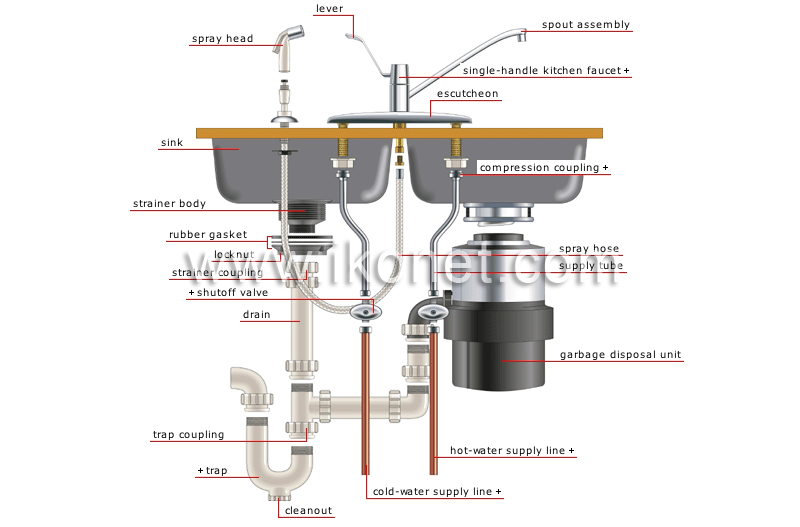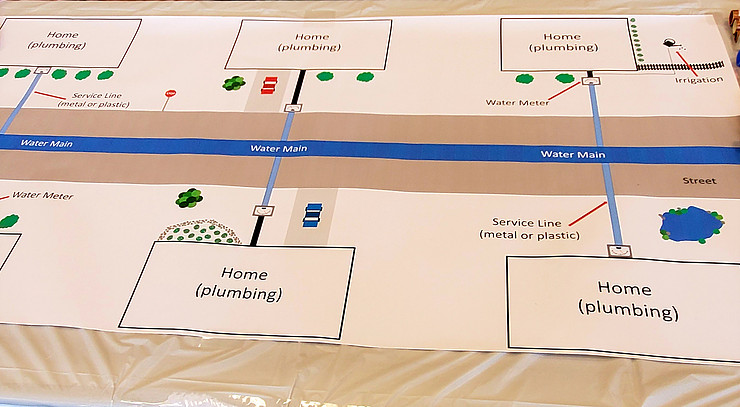Just how do you actually feel on the subject of Plumbing Installation 101: All You Need to Know?

Understanding just how your home's plumbing system functions is important for every single property owner. From supplying clean water for drinking, food preparation, and bathing to securely getting rid of wastewater, a well-kept pipes system is crucial for your household's wellness and comfort. In this thorough guide, we'll check out the detailed network that makes up your home's plumbing and offer ideas on upkeep, upgrades, and managing usual concerns.
Introduction
Your home's plumbing system is more than simply a network of pipelines; it's an intricate system that guarantees you have access to tidy water and reliable wastewater elimination. Understanding its components and how they interact can assist you stop costly fixings and guarantee every little thing runs smoothly.
Basic Elements of a Pipes System
Pipelines and Tubing
At the heart of your pipes system are the pipes and tubes that carry water throughout your home. These can be made from different materials such as copper, PVC, or PEX, each with its benefits in regards to sturdiness and cost-effectiveness.
Components: Sinks, Toilets, Showers, etc.
Fixtures like sinks, bathrooms, showers, and bath tubs are where water is made use of in your home. Recognizing just how these components link to the plumbing system assists in identifying issues and intending upgrades.
Shutoffs and Shut-off Factors
Shutoffs regulate the circulation of water in your pipes system. Shut-off shutoffs are crucial throughout emergency situations or when you need to make repair work, enabling you to separate parts of the system without interrupting water flow to the entire home.
Water System
Key Water Line
The major water line links your home to the local supply of water or a personal well. It's where water enters your home and is dispersed to different fixtures.
Water Meter and Pressure Regulatory Authority
The water meter actions your water use, while a pressure regulator makes sure that water streams at a safe stress throughout your home's pipes system, stopping damage to pipelines and fixtures.
Cold Water vs. Warm water Lines
Recognizing the difference between cold water lines, which provide water directly from the major, and hot water lines, which carry warmed water from the water heater, helps in repairing and planning for upgrades.
Drain System
Drain Water Lines and Traps
Drain pipes lug wastewater far from sinks, showers, and toilets to the sewer or septic system. Catches prevent sewer gases from entering your home and also catch debris that can trigger blockages.
Ventilation Pipelines
Ventilation pipelines enable air into the water drainage system, protecting against suction that might slow down drainage and create traps to empty. Appropriate ventilation is essential for maintaining the honesty of your plumbing system.
Importance of Correct Drain
Ensuring correct drain stops backups and water damages. Routinely cleansing drains and preserving catches can stop costly repair services and extend the life of your plumbing system.
Water Furnace
Types of Hot Water Heater
Hot water heater can be tankless or typical tank-style. Tankless heaters warm water as needed, while tanks keep warmed water for immediate usage.
Upgrading Your Plumbing System
Factors for Updating
Upgrading to water-efficient fixtures or changing old pipelines can improve water high quality, reduce water costs, and increase the value of your home.
Modern Pipes Technologies and Their Advantages
Discover innovations like clever leak detectors, water-saving toilets, and energy-efficient hot water heater that can conserve money and minimize ecological impact.
Expense Factors To Consider and ROI
Calculate the ahead of time expenses versus lasting savings when considering pipes upgrades. Several upgrades spend for themselves through decreased utility costs and less fixings.
How Water Heaters Link to the Pipes System
Recognizing exactly how water heaters link to both the cold water supply and hot water circulation lines helps in detecting problems like inadequate hot water or leaks.
Upkeep Tips for Water Heaters
Regularly purging your hot water heater to eliminate debris, checking the temperature settings, and examining for leaks can extend its lifespan and boost power effectiveness.
Common Plumbing Issues
Leakages and Their Reasons
Leakages can happen because of maturing pipelines, loosened installations, or high water stress. Addressing leaks quickly prevents water damages and mold and mildew growth.
Obstructions and Clogs
Clogs in drains pipes and bathrooms are typically triggered by flushing non-flushable things or a build-up of oil and hair. Utilizing drain screens and bearing in mind what goes down your drains pipes can protect against clogs.
Indications of Plumbing Problems to Watch For
Low water pressure, slow drains pipes, foul odors, or unusually high water expenses are indicators of potential pipes problems that must be addressed promptly.
Pipes Maintenance Tips
Routine Inspections and Checks
Schedule annual plumbing assessments to capture issues early. Try to find indicators of leaks, corrosion, or mineral buildup in faucets and showerheads.
DIY Maintenance Tasks
Basic jobs like cleaning tap aerators, checking for commode leaks using color tablets, or protecting revealed pipelines in cool environments can prevent major pipes issues.
When to Call a Specialist Plumbing Professional
Know when a plumbing issue calls for professional expertise. Attempting complicated fixings without correct knowledge can bring about more damages and greater repair service prices.
Tips for Decreasing Water Use
Easy habits like taking care of leaks without delay, taking shorter showers, and running complete loads of laundry and recipes can conserve water and reduced your energy bills.
Eco-Friendly Pipes Options
Take into consideration sustainable pipes products like bamboo for flooring, which is durable and environment-friendly, or recycled glass for kitchen counters.
Emergency Preparedness
Steps to Take During a Pipes Emergency situation
Know where your shut-off shutoffs lie and how to shut off the water system in case of a ruptured pipe or major leakage.
Relevance of Having Emergency Get In Touches With Convenient
Keep get in touch with details for local plumbing technicians or emergency situation solutions readily available for quick response during a plumbing situation.
Ecological Impact and Preservation
Water-Saving Components and Home Appliances
Mounting low-flow faucets, showerheads, and toilets can dramatically lower water use without sacrificing performance.
DIY Emergency Situation Fixes (When Appropriate).
Momentary solutions like making use of air duct tape to spot a dripping pipe or putting a bucket under a dripping faucet can minimize damage until a professional plumber gets here.
Verdict.
Recognizing the anatomy of your home's plumbing system encourages you to keep it successfully, conserving time and money on repair work. By complying with regular maintenance regimens and remaining notified about modern pipes modern technologies, you can guarantee your plumbing system operates successfully for several years to come.
HOW YOUR PLUMBING SYSTEM WORKS
Which Pipes Do What?
Blue lines = fresh water supply entering the building Red lines = hot water supply entering the building Grey lines = pipes carrying waste away from the building and venting pipes carrying gases away from the building (through the roof) YOUR MAIN PLUMBING SYSTEMS
There are two main plumbing systems that support your home s basic plumbing needs one that brings clean water into your home, and one that sends dirty water away from your home. Connected to the toilet, bath, shower, and other faucets in your home, these two systems keep your water flowing in the right directions.
ACCESSING FRESH WATER
Fresh and clean water is brought into your home through the main water supply line . Filtered through one pipe, this water is pressured to flow into the various fixtures in your home at any given time.
This water can be sourced from a well located on your property, a pond or river (mostly cottages), or, as in most cases, from the city s municipal water treatment centre. However, it is important to note that water that is untreated, such as the water siphoned from ponds or rivers, may not be safe to drink. Personal water supplies always need to be treated for hardness and contaminants before consumed.
MUNICIPAL WATER SUPPLIES
Improve taste and odour Remove sediment Eliminate hardness Reduce chlorine COLD WATER SUPPLY VS. HOT WATER SUPPLY
Cold water flows into your home or building through the service line, which then distributes hot or cold water to your fixtures. This line is most commonly run through a central column that runs floor to floor. Hot water runs in short and straight pipes as the longer the pipeline, the more heat that will be lost in the transfer. Having shorter pipes also allows residents to access hot water more quickly.
WASTE WATER SYSTEM
Your wastewater system is divided into two parts pipes that send wastewater away from your home and venting pipes that send sewer gas away from your home. Sewage water travels through pipes that flush the water and waste towards local sewers that are operated and managed by your city or town. Most sewer systems rely on gravity to move the wastewater to where it needs to go.
The further away from your toilet or sink, the larger wastewater pipes become. This allows for waste to be disposed of from various parts of your home or business at once without pipe blockages. The angle and flow of these pipes are also essential for keeping your waste pipes clear of build up.
https://harrisplumbing.ca/how-your-home-plumbing-system-works/

As a person who reads about , I imagined sharing that editorial was essential. So long as you liked our blog posting plz do not forget to share it. Thanks so much for your time invested reading it.
Call Today